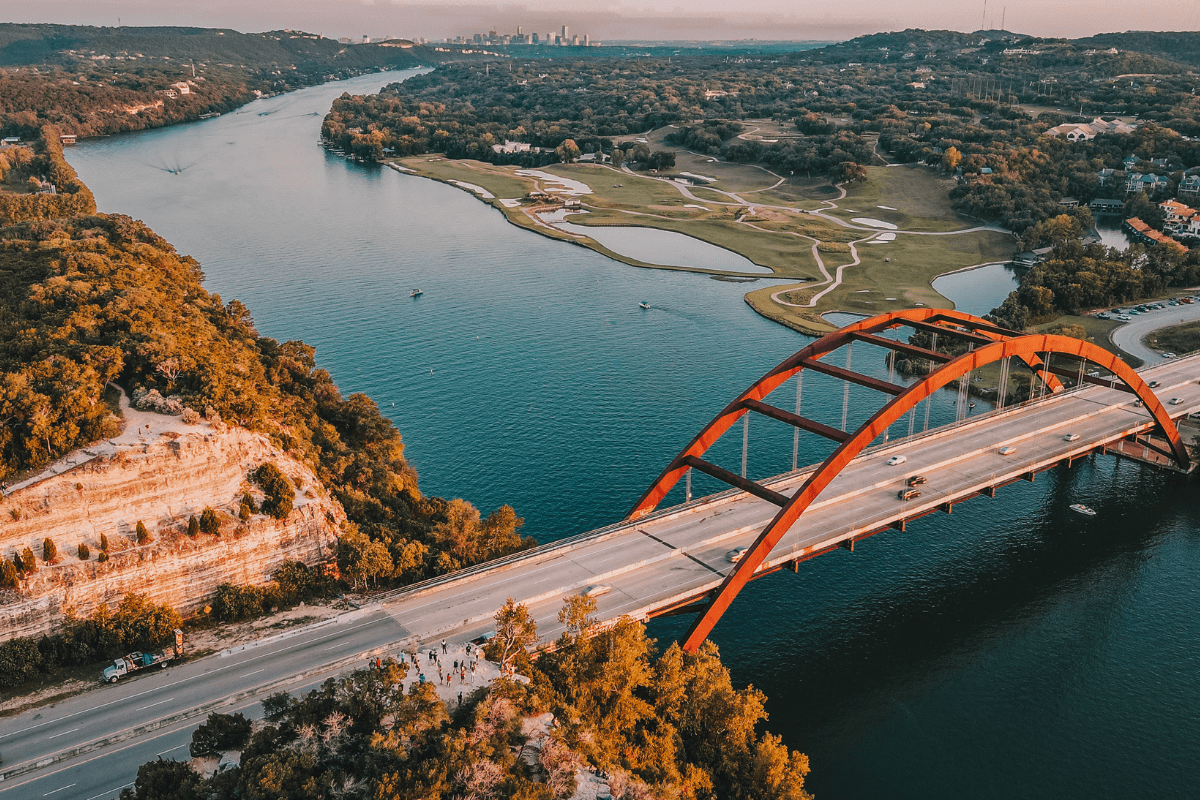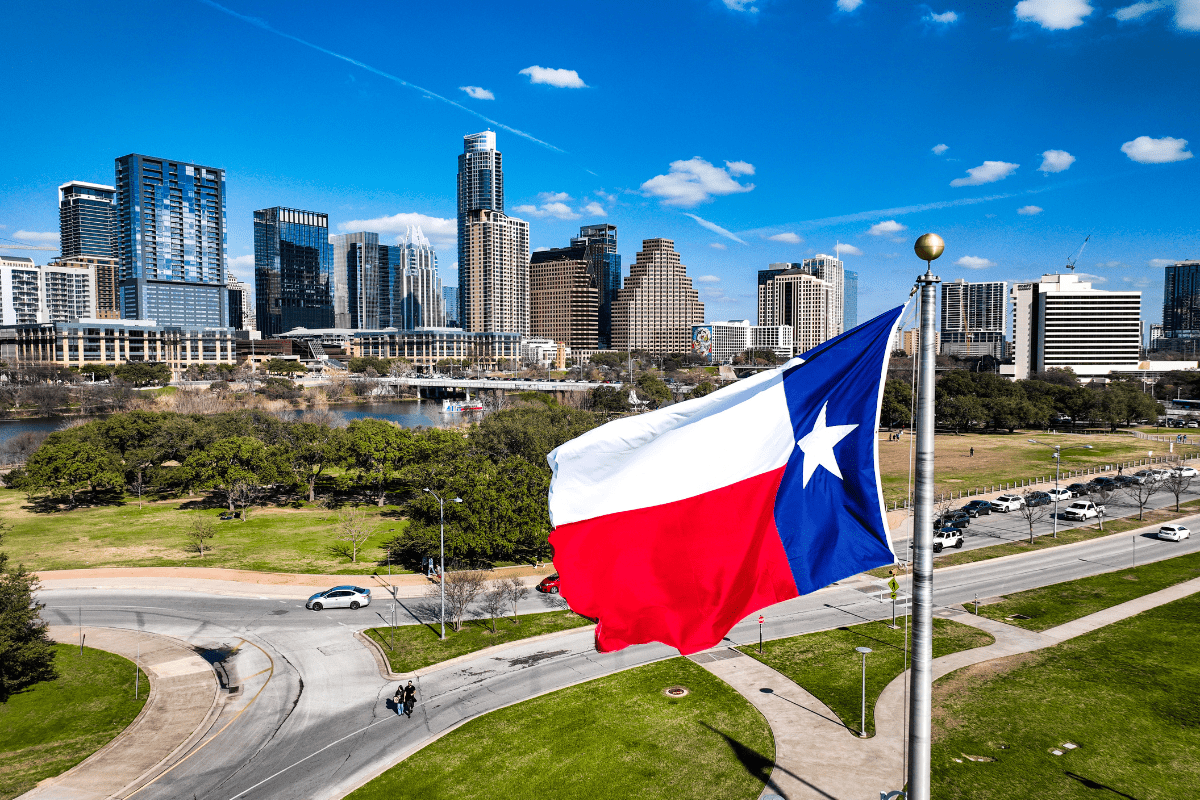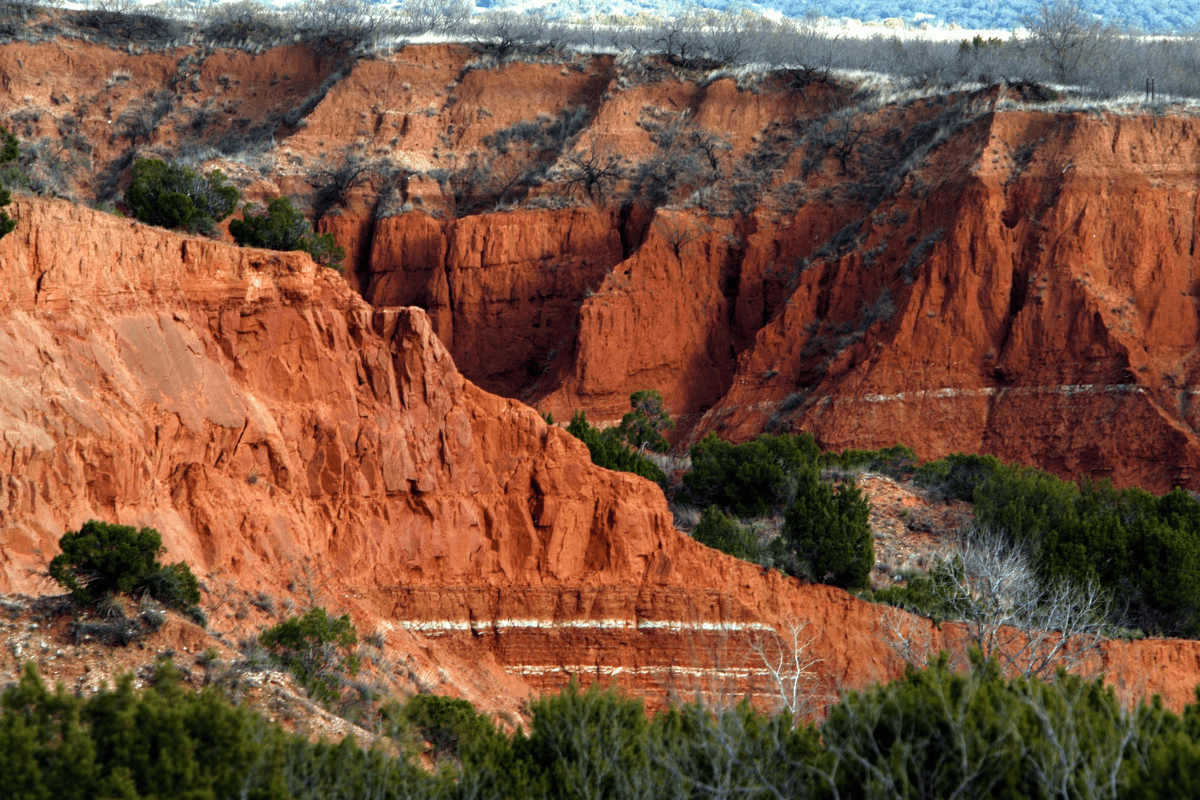Let me tell you something about Texas weather… it's basically playing Russian roulette with Mother Nature. One day you're sweating through your shirt in Houston's sauna-like humidity, and the next week you're watching Dallasites lose their minds over a half-inch of ice on the roads. Trust me, after years of helping friends plan their Texas trips (and hearing horror stories about visiting San Antonio in August), I've learned that timing is everything in the Lone Star State.
Why Texas weather will make or break your trip
Here's the thing about Texas: it's huge. Like, really huge. We're talking about a state that spans eight different climate zones, which means the weather in El Paso has about as much in common with Houston as a desert has with a swamp. Eastern Texas feels like you're swimming through the air in summer, while West Texas will literally bake you like a potato.
I learned this the hard way when I planned a "Texas road trip" one July, thinking I could hit all the major cities in one go. Spoiler alert: I spent most of my time hiding in air-conditioned buildings and questioning my life choices. The Gulf Coast was preparing for hurricane season, Austin felt like the surface of the sun, and don't even get me started on trying to hike in Big Bend when it was 110°F.
The good news? Once you understand Texas's weather patterns, you can plan trips that are actually enjoyable. Like, legitimately pleasant. You just need to know when each city shines… and when it's trying to kill you with either heat stroke or surprise ice storms.
Spring brings Texas to life (and tests your allergies)
Austin: Where March through May feels like paradise
Spring in Austin is basically nature's apology for summer. The temperatures hover between 52°F and 77°F, which in Texas speak means "you can actually exist outside without melting." This is when Lady Bird Lake's 10-mile trail system becomes packed with runners, cyclists, and people pretending they exercise regularly.
March kicks things off with SXSW, when the entire tech and music world descends on Austin like locusts, except these locusts have startup pitches and band demos. By April, the weather is so perfect you'll understand why everyone and their mother is moving to Austin. The food truck lines get longer, the patio bars get rowdier, and Barton Springs Pool maintains its constant 70°F temperature for those brave enough to jump in.
But here's what the tourism boards won't tell you: May is basically monsoon season in disguise. The city averages 3.8 inches of rain, usually delivered via dramatic thunderstorms that appear out of nowhere. I once got caught in one while waiting for barbecue (worth it), and let's just say my shoes took three days to dry out.
Pro tip for spring visitors:
- Pack a rain jacket (seriously)
- Book restaurants with covered patios
- Download weather apps with radar
- Bring allergy meds if cedar pollen affects you
- Accept that your hair will be frizzy
San Antonio: Fiesta season is no joke
If you want to see San Antonio at its absolute best, circle late April on your calendar. The weather sits in that magical 70s-80s°F sweet spot, and the entire city loses its collective mind during Fiesta. We're talking about a 10-day party with over 100 events that attracts 3 million visitors. Yes, million with an M.
The River Walk, which can feel like a tourist trap in summer's oppressive heat, becomes genuinely delightful in spring. You can actually walk the full 15-mile loop without needing medical attention. The UNESCO World Heritage missions are explorable without feeling like you're in a historical reenactment of desert survival.
Hill Country wildflower mania
Between late March and April, the Texas Hill Country transforms into an Instagram wonderland. Fredericksburg becomes bluebonnet central, with every highway shoulder occupied by families taking photos. Yes, it's touristy. Yes, you'll probably do it too. No shame… those flowers are legitimately gorgeous.
Fall is Texas's secret weapon season
The great Texas weather conspiracy of autumn
Here's what Texans don't want outsiders to know: fall is actually the best time to visit. September through November delivers weather so perfect it almost makes you forget about summer's torture. Almost.
Austin's tourism score peaks from mid-September through late October, and for good reason. The temperature drops to a civilized 70-80°F range, the humidity takes a hike, and the city hosts both Austin City Limits and Formula 1 racing. Hotel prices go crazy during these events, so book at least two to three months ahead unless you enjoy paying $400 for a motel room.
Dallas finally makes sense
October in Dallas is like meeting a completely different city. The weather clears up to postcard-perfect blue skies, temperatures settle between 60°F and 78°F, and the State Fair of Texas gives everyone an excuse to eat fried everything.
Business travel slows down in fall, which means you might actually score decent hotel rates. The weather is perfect for exploring neighborhoods like Bishop Arts District or Deep Ellum without arriving drenched in sweat. Even the locals seem friendlier when they're not battling 100-degree heat.
Houston becomes bearable (gasp!)
I know, I know… "bearable" isn't exactly a ringing endorsement. But trust me, for Houston, bearable is a massive upgrade. Once hurricane season starts winding down and the humidity drops from "swimming pool" to merely "damp towel," the city becomes genuinely enjoyable.
October and November are prime time for exploring the Museum District, catching an Astros game, or eating your weight in Vietnamese food without feeling like you're in a steam room. The city's incredible food scene becomes so much more appealing when you're not sweating into your pho.
Fall road trip magic:
- Start in Dallas for the State Fair
- Drive to Austin for ACL
- End in San Antonio for Dia de los Muertos
- Weather stays consistent throughout
- Texas BBQ tastes better in fall (fight me)
Winter: When South Texas gets its revenge
San Antonio's sneaky good winter
While the rest of the country is dealing with snow and sadness, San Antonio is chilling (literally) with daytime temperatures in the comfortable 60s°F. The River Walk gets decked out in holiday lights, creating this magical atmosphere that would be completely ruined by summer's humidity.
Here's the kicker: hotel rates drop 30-40% compared to peak season. You can stay at places that would normally cost a mortgage payment for the price of a nice dinner. The tourist crowds thin out, meaning you can actually see the Alamo without being surrounded by field trips and tour groups.
El Paso's elevation salvation
Plot twist: El Paso has fantastic winter weather. I know, I was shocked too. Thanks to its elevation at 3,730 feet, the city stays about 10 degrees cooler than the surrounding desert. Winter brings sunny days with temperatures between 59-66°F.
The annual Sun Bowl on December 31st basically exists because the weather is so reliable. When the rest of Texas is dealing with random cold fronts and confused weather patterns, El Paso just keeps delivering consistent, sunny days.
Austin and Houston: Budget traveler's paradise
Winter is when Austin finally becomes affordable for normal humans. Hotel rates average $147, which is a 46% savings from summer peaks. The temperature rarely drops below the 40s at night, meaning you can still enjoy outdoor activities without freezing.
Fair warning: January is peak cedar fever season in Central Texas. If you're allergic, you'll want to stock up on antihistamines or maybe just skip the Hill Country altogether. I have a friend who visited in January and spent the entire trip looking like she'd been crying over a breakup. It was just the cedar pollen.
Summer in Texas: A survival guide
The truth about Texas summers
Let's not sugarcoat this: Texas summers are brutal. June through August delivers temperatures that routinely exceed 95°F statewide. Houston gets special mention for its July specialty: 70% humidity with mid-90s temperatures, creating a heat index that makes you question why humans chose to live here.
I spent one July in Houston for work, and I swear I took four showers a day. Not because I'm high maintenance, but because stepping outside for five minutes meant needing a change of clothes. The locals have adapted by basically living in air conditioning from June to September.
Summer survival tactics:
- Exercise before 10 AM or after 6 PM
- Always carry water
- Embrace indoor attractions shamelessly
- Rent cars with excellent AC
- Lower your fashion standards
- Accept that makeup is pointless
- Plan pool or water activities
Hurricane season reality check
From June 1 through November 30, the Texas Gulf Coast plays hurricane roulette. August and September are peak months for tropical systems. While hurricanes don't hit every year, the possibility is real enough that you need travel insurance for any coastal summer trip.
I've had two trips impacted by hurricanes… one where we evacuated Houston (adventure!), and another where we just dealt with outer bands bringing torrential rain to Austin. Neither was particularly fun, but at least we had good stories afterward.
Navigating Texas weather extremes
Winter storms: The ice apocalypse
Here's something hilarious and terrifying: Dallas averages 12 days below freezing annually, and the city completely loses its mind each time. A half-inch of ice will shut down the entire metroplex because, let's be honest, Texans don't know how to drive on ice.
The February 2021 storm was a wake-up call about Texas infrastructure. If you're visiting North Texas in winter, monitor weather forecasts obsessively and be prepared to hunker down if ice is predicted. Stock up on snacks, charge your devices, and prepare to be entertained by locals attempting to navigate frozen conditions.
Desert heat: When Arizona laughs at you
Big Bend can exceed 110°F in summer, which is less "challenging hiking weather" and more "potential death trap." Palo Duro Canyon isn't much better, regularly hitting 100°F+ in summer. These places are stunning, but visit between October and April unless you have a death wish.
Hidden gems and seasonal sweet spots
West Texas surprises
Marfa works best in spring and fall when you can gallery hop without heat stroke and watch for the mysterious lights without freezing. The high desert location means you'll experience 40-degree temperature swings daily, so layers are non-negotiable.
Big Bend National Park follows similar rules: October through April only, unless you enjoy hiking in an oven. The reward for proper timing? Some of the most spectacular landscapes in Texas without the crowds of more famous parks.
Coastal contradictions
South Padre Island flips the script on typical Texas weather patterns. Visit May through October for actual beach weather and warm water, or December through February for mild temperatures and bargain prices (just don't expect to swim comfortably).
Your Texas weather playbook
After all this weather talk, here's your executive summary for Texas trip planning. Visit Austin in April for wildflowers and perfect temperatures, or October for festivals without the sweat. Hit San Antonio from December through February for comfortable weather and holiday charm. Time Houston trips for March or November to avoid both humidity and hurricanes. Plan Dallas visits in May or October for blue skies and reasonable temperatures. Head to El Paso and West Texas from October through April when the desert won't try to kill you.
Most importantly, stay flexible. Texas weather has a sense of humor, and it's usually at your expense. Pack layers, download weather apps, and always have a backup plan. But when you nail the timing? When you're sipping a margarita on a San Antonio patio in perfect 75-degree weather, or hiking Big Bend under crystal clear winter skies? That's when you'll understand why Texans put up with the weather extremes.
Because when Texas weather cooperates, there's no place quite like it. Just don't visit in August. Seriously. I'm begging you.





